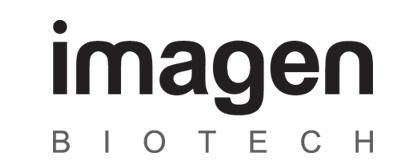预约演示
更新于:2025-12-06

The University of Manchester
更新于:2025-12-06
概览
标签
肿瘤
其他疾病
内分泌与代谢疾病
小分子化药
重组多肽
ADC
疾病领域得分
一眼洞穿机构专注的疾病领域
暂无数据
技术平台
公司药物应用最多的技术
暂无数据
靶点
公司最常开发的靶点
暂无数据
| 排名前五的药物类型 | 数量 |
|---|---|
| 小分子化药 | 11 |
| 重组多肽 | 1 |
| ADC | 1 |
| 蛋白水解靶向嵌合体(PROTAC) | 1 |
| 多肽药物 | 1 |
关联
18
项与 The University of Manchester 相关的药物靶点- |
作用机制 维生素K拮抗剂 |
原研机构 |
在研适应症 |
非在研适应症- |
最高研发阶段批准上市 |
首次获批国家/地区 美国 |
首次获批日期1944-07-31 |
作用机制 5-HT2A receptor拮抗剂 [+4] |
在研适应症 |
非在研适应症 |
最高研发阶段临床2期 |
首次获批国家/地区- |
首次获批日期- |
靶点 |
作用机制 IDS调节剂 |
在研适应症 |
非在研适应症- |
最高研发阶段临床1/2期 |
首次获批国家/地区- |
首次获批日期- |
564
项与 The University of Manchester 相关的临床试验NCT07252206
Culturally-adapted Cognitive-behavioural Therapy for Black Sub-Saharan African and Caribbean People Experiencing Psychosis: A Case Series
The goal of this case series study is to learn if culturally-adapted cognitive-behavioural therapy is practical, acceptable and safe among Black Sub-Saharan African and Caribbean people experiencing psychosis. The main question it aims to answer is:
Is culturally-adapted CBT for psychosis feasible, acceptable to and safe for Black Sub-Saharan African and Caribbean people experiencing psychosis?
Participants will be asked to:
* Answer some questionnaires about how things are at the moment
* Attend up to 16 sessions of therapy
* Answer the same questionnaires to see what has changed, if anything
* Complete a semi-structured interview about their expectations and experience of therapy
Is culturally-adapted CBT for psychosis feasible, acceptable to and safe for Black Sub-Saharan African and Caribbean people experiencing psychosis?
Participants will be asked to:
* Answer some questionnaires about how things are at the moment
* Attend up to 16 sessions of therapy
* Answer the same questionnaires to see what has changed, if anything
* Complete a semi-structured interview about their expectations and experience of therapy
开始日期2026-01-01 |
申办/合作机构 |
NCT07251478
Transparent Communication to Improve Mental Wellbeing and Public Attitude Towards the Reintegration of Former Boko Haram Members in Nigeria: A Pilot Randomised Control Trial
Reintegrating those once affiliated with proscribed terrorist groups constitutes significant global challenges due to public stigma, poor awareness of reintegration programmes and resentment towards incentives provided to rehabilitated former members of such groups. Of central concern is the anxiety, trauma and depression suffered alongside distrust for reintegration programmes, including the genuine repentance of former members of the proscribed group. The implication is its risk in exacerbating reoffending. Yet, a gap exists to address this urgent problem. The proposed study seeks to test and pilot the feasibility and acceptability of a novel intervention called Prosociality, Empathy and Awareness Communication to aid rEintegration (PEACE) in improving mental well-being and public attitude towards reintegration. The intervention is a low-intensity intervention lasting approximately 3-5 minutes design to create awareness on the rationale behind reintegration programme, reduce anxiety, depression and foster positive attitude towards reintegration.
开始日期2025-12-10 |
申办/合作机构 |
ISRCTN43561070
Manchester Asthma and Allergy Study (MAAS) age 25 plus follow up
开始日期2025-12-01 |
申办/合作机构 |
100 项与 The University of Manchester 相关的临床结果
登录后查看更多信息
0 项与 The University of Manchester 相关的专利(医药)
登录后查看更多信息
48,296
项与 The University of Manchester 相关的文献(医药)2026-04-01·Neural Regeneration Research
Noradrenergic excitation of astrocytes supports cognitive reserve
Article
作者: Verkhratsky, Alexei ; Zorec, Robert
2026-02-01·JOURNAL OF AFFECTIVE DISORDERS
Association between biological aging and genetic susceptibility with the risk of bipolar disorder and schizophrenia: A prospective cohort study
Article
作者: Zhang, Yushan ; Hu, Zhensheng ; Chen, Jiaqi ; Ji, Weidong ; Feng, Ruiqi ; Cheng, Yinlin ; Zhao, Huiying ; Wang, Kai ; Lai, Cong
BACKGROUND:
Bipolar disorder (BD) and schizophrenia (SCZ) are severe psychiatric disorders with complex etiologies. Accelerated biological aging, potentially exacerbated by environmental exposures like air pollution, may represent a key pathogenic mechanism. This study aimed to investigate the independent and combined effects of biological aging and genetic risk on incident BD and SCZ, and to assess whether biological aging mediates the impact of environmental factors.
METHODS:
We analyzed data from 483,482 UK Biobank participants. Biological aging was quantified using phenotypic age acceleration (PhenoAgeAccel), and genetic predisposition was assessed via polygenic risk scores (PRSs). Cox proportional hazards models, adjusted for numerous covariates, were used to estimate hazard ratios (HRs). Mediation analysis evaluated the role of PhenoAgeAccel in the pathway from air pollution and noise to disease outcomes.
RESULTS:
A 5-year increase in PhenoAgeAccel was significantly associated with a higher risk of BD (HR 1.271, 95 % CI 1.185-1.362) and SCZ (HR 1.348, 95 % CI 1.230-1.476). The association with BD risk was stronger in overweight or obese participants. Individuals with high genetic risk and greater biological aging had the highest risk of developing BD (HR 2.492, 95 % CI 1.764-3.521) and SCZ (HR 7.795, 95 % CI 3.913-15.529). PhenoAgeAccel mediated 7-12 % of the association between air pollution and BD and 3-5 % of its association with SCZ.
CONCLUSION:
PhenoAgeAccel is significantly associated with the risk of common psychiatric disorders, including BD and SCZ, and shows promise as a novel biomarker to guide precision prevention and management of these conditions.
2026-02-01·JOURNAL OF AFFECTIVE DISORDERS
The association of parental depression with adolescent obesity: A national longitudinal study in China
Article
作者: Ma, Yanan ; Lv, Yuejia ; Tang, Xiao ; Song, Guirong ; Ding, Qianwen
AIMS:
Existing research has scarcely explored the correlation between parental depression and adolescent obesity. This study aims to assess this association using an 8-year longitudinal study, with a particular focus on comparing the impacts of paternal and maternal depression on adolescent obesity.
METHODS:
A longitudinal sample of 2206 families with adolescents aged 10 to 18 and their parents was constructed from four waves of the Chinese Family Panel Studies. Weight and height data were self-reported by participants. Depressive symptoms were assessed using the Center for Epidemiologic Studies Depression Scale (CESD), with depression defined as a score of CES-D ≥ 9. Mixed models were utilized to examine the association of parental depression with adolescent overweight and obesity, as well as body mass index z-score (zBMI).
RESULTS:
After comprehensive adjustment for covariates, maternal depression was associated with adolescent overweight or obesity (OR = 5.076, 95 % CI: 3.746, 6.878), obesity (OR = 3.342, 95 % CI: 1.842, 6.062), and elevated zBMI (β = 0.387, 95 % CI: 0.322, 0.452). Adolescents exposed solely to maternal depression exhibited increased odds of overweight or obesity (OR = 5.248, 95 % CI: 3.768, 7.309), obesity (OR = 3.724, 95 % CI: 1.931, 7.184), and elevated zBMI (β = 0.410, 95 % CI: 0.339, 0.481) compared to those whose parents had no depression. These findings were consistent for adolescents with both depressed fathers and mothers, but not for those exposed solely to paternal depression.
CONCLUSION:
Maternal depression significantly contributes to the elevated risk of adolescent overweight and obesity, while paternal depression exhibits a relatively weaker correlation with teenage weight gain.
311
项与 The University of Manchester 相关的新闻(医药)2025-12-04
基因编辑、病毒载体等前沿生物技术的突破,正驱动罕见病治疗领域实现革命性跨越。欧洲EMA、美国FDA及中国CDE的近期审批动态显示,跨国药企与本土创新企业双线发力,一系列靶向精准、机制创新的疗法,为全球罕见病患者带来新的生存希望。以下梳理近期全球六大罕见病治疗领域的突破性进展。一、Kedrion Biopharma:ACP治疗破局,血浆源性疗法获EMA认证
意大利Kedrion Biopharma公司近日宣布,其自主研发的血浆源性酶替代疗法,已正式获得欧洲药品管理局(EMA)孤儿药资格认定,用于治疗先天性无铜蓝蛋白血症(ACP)。这一认定不仅是对疗法临床价值的权威背书,更标志着这款靶向CP基因突变的创新疗法,迈入临床转化与商业化的关键阶段。
ACP是一种罕见的成人发病型常染色体隐性遗传病,全球患病率约为1/200万,在我国临床病例尤为稀缺。该病由CP基因突变导致铜蓝蛋白合成缺陷,使机体铁氧化酶活性完全丧失,进而引发铁离子在肝脏、胰腺及中枢神经系统等关键器官异常沉积,最终形成“神经系统症状、糖尿病、视网膜病”典型三联征,目前临床尚无有效治疗手段。
该疗法通过静脉输注方式,为患者补充具备完整生物活性的铜蓝蛋白,从致病根源上恢复机体铁代谢平衡,减少铁离子介导的组织损伤以延缓疾病进展。借助EMA孤儿药资格带来的研发激励与审评加速优势,该疗法有望快速推进后期临床研究,成为全球首个针对ACP的特异性治疗方案。二、中眸医疗:广谱RP疗法问世,光遗传技术重启视觉
我国本土创新药企中眸医疗传来重磅消息,其自主研发的光遗传基因疗法ZM-02,已成功获得美国FDA的新药临床试验(IND)批准,用于晚期视网膜色素变性(RP)患者的治疗。作为全球首款具备基因突变非依赖性的RP治疗药物,ZM-02彻底打破了传统基因疗法对特定突变类型的限制。
RP是国内发病率约1/3500的遗传性致盲眼病,目前已发现超过270种基因突变与该病相关,遗传模式复杂多样,临床诊疗极具挑战。患者典型病程以夜盲为首发症状,多在青少年期发病,随病情进展逐渐出现视野缩小、中心视力衰退,最终发展为永久性失明。中眸医疗创始人沈吟教授形象地指出,ZM-02无需依赖残存感光细胞“修复断桥”,而是为受损视网膜“重铺视觉信号通路”。
该疗法以腺相关病毒(AAV)为载体,将光敏感蛋白基因精准递送至患者视网膜组织,使原本不具备感光功能的存活内层神经元获得全新感光能力,直接绕过致病基因突变环节重建视觉信号传递。ZM-02此前已获FDA孤儿药资格,在研究者发起的临床试验(IIT)中,所有给药组患者均实现视觉功能显著提升,此次IND批准将加速其进入全球多中心临床阶段。三、曼彻斯特大学/Avrobio:华裔患儿治愈首例,MPSⅡ疗法开新篇
英国曼彻斯特皇家儿童医院主导的临床试验取得历史性突破:3岁华裔男童奥利弗·楚接受AVR-RD-05造血干细胞基因疗法后,体内艾杜糖醛酸-2-硫酸酯酶(IDS酶)活性飙升至正常人数百倍,语言、运动及认知功能实现显著改善,成为全球首例通过该类疗法成功治愈黏多糖贮积症Ⅱ型(MPSⅡ,又称亨特综合征)的患者。
MPSⅡ是已纳入我国《第一批罕见病目录》的X连锁隐性遗传病,因IDS基因突变导致溶酶体酶活性缺失,造成黏多糖在全身各组织器官进行性贮积。患者婴儿期后逐渐出现发育倒退,运动与认知功能逐步丧失,常因神经系统退化、心肺功能衰竭等并发症在青少年期夭折。传统酶替代疗法年费用高达60万美元,且无法穿透血脑屏障,对中枢神经损伤无效。
AVR-RD-05采用离体基因编辑策略:提取患者自体造血干细胞,通过慢病毒载体将野生型IDS酶基因转导至细胞内,经体外扩增后回输体内。基因修饰后的干细胞可在骨髓稳定定植,持续分泌活性IDS酶并穿透血脑屏障,实现中枢与外周双重治疗。奥利弗于2024年12月完成细胞制备,2025年2月回输,5月即检测到酶活性显著提升;9个月后彻底摆脱输液依赖,多器官功能同步恢复。该疗法2022年获FDA资格认定,其技术路径为同类疾病提供了可复制范本。四、维亚臻:siRNA药物跨界攻坚,补体肾病迎精准方案
2024年11月,国家药监局CDE官网公示,维亚臻生物首款自主研发的小干扰RNA(siRNA)药物VSA012注射液,其IND申请正式获批,拟用于治疗狼疮肾炎、IgA肾病等多种补体相关性肾病。这一突破不仅拓展了该药的适应症版图,更验证了其核心技术平台的广谱应用潜力。
补体相关性肾病由补体系统异常激活介导,过度活化的补体级联反应会形成膜攻击复合物,损伤肾小球内皮细胞并引发炎症级联反应,进而导致蛋白尿、血尿及肾功能进行性衰退,部分患者可快速进展为终末期肾病,现有治疗手段疗效有限,临床需求迫切。
VSA012通过RNA干扰机制,精准沉默补体通路关键分子的基因表达,从源头高效抑制补体异常活化。该药此前已在国内获批用于治疗阵发性睡眠性血红蛋白尿症(PNH),此次向肾脏疾病领域的拓展,标志着我国siRNA药物研发已进入国际先进行列。五、邦耀生物:CRISPR技术破局地贫,患儿终结输血依赖
2024年11月,邦耀生物宣布,在其基因编辑疗法BRL-101的多中心Ⅱ期注册临床试验中,与广西医科大学第一附属医院合作,成功帮助1名5岁输血依赖型β-地中海贫血患儿“欣欣”彻底摆脱输血依赖。这一成果不仅验证了CRISPR基因编辑技术的临床价值,更标志着我国在该领域的研发实力已达国际先进水平。
输血依赖型β-地中海贫血由HBB基因突变引发,导致β-珠蛋白链合成障碍,引发无效红细胞生成及严重溶血性贫血。患者需终身接受规律输血维持生命,长期输血带来的铁过载问题,会进一步损伤心脏、肝脏等重要脏器。异基因造血干细胞移植是唯一根治手段,但面临配型难、移植物抗宿主病风险高的困境,临床应用受限。
BRL-101采用体外CRISPR/Cas9基因编辑技术,精准修饰患者自体造血干细胞的BCL11A增强子区域,通过抑制BCL11A表达激活胎儿血红蛋白(HbF)的持续高效表达。经编辑的干细胞回输后,可代偿性合成功能性血红蛋白,重建正常造血功能。“欣欣”的成功案例,为无法接受移植的地贫患者提供了革命性治疗选择。六、诺华:天价疗法扩容,SMA治疗覆盖全年龄段
2024年11月,诺华集团宣布,其基因疗法Itvisma(通用名:onasemnogene abeparvovec)已获得美国FDA批准,将脊髓性肌萎缩症(SMA)治疗适应症扩展至2岁及以上患者。该药单剂定价210万美元(约合人民币1495万元),成为全球首个覆盖全年龄段SMA患者的基因治疗产品。
SMA由SMN1基因突变或缺失导致,该基因负责编码维持运动神经元存活的SMN蛋白,其功能缺陷会引发运动神经元进行性退化。人体同源基因SMN2仅能产生约10%的功能性SMN蛋白,因此SMN2基因拷贝数直接决定疾病严重程度。Itvisma的活性成分与诺华另一款SMA药物Zolgensma一致,后者此前仅获批用于2岁以下患儿。
Itvisma以腺相关病毒9型(AAV9)为载体,通过一次性鞘内注射方式将功能性SMN1基因递送至中枢神经系统,实现SMN蛋白的长期稳定表达。其独特优势在于采用固定剂量给药,无需根据患者年龄或体重调整。3期临床数据显示,接受治疗的患者在52周随访中运动功能显著改善,且安全性可控。该药2024年销售额达12.14亿美元,此次适应症扩容将进一步巩固其全球市场地位。结语:技术创新与人文关怀共筑希望
从血浆源性酶替代到基因编辑、siRNA等前沿技术,罕见病治疗已正式从“无药可医”的困境,迈入“基因层面精准施治”的新纪元。行业数据显示,全球基因疗法市场规模2024年已达90.3亿美元,预计2033年将增至646.4亿美元,复合增长率高达27.6%。跨国药企与本土创新企业的协同发力,正为全球罕见病患者构建起坚实的希望之路。未来,随着技术不断成熟、生产成本下降及支付保障体系完善,曾经的“天价疗法”将逐步惠及更多患者,让罕见病不再“孤独”。
免责声明:本文旨在科学普及,内容基于公开科研文献和临床数据,不构成医疗建议。疾病诊断与治疗请务必咨询专业眼科医生。有什么问题也可以私信留言哦添加chinadr3。
2025-12-01
2025年12月1日,Generate:Biomedicines(以下简称“Generate”)宣布,计划启动两项全球3期临床试验——SOLAIRIA-1和SOLAIRIA-2,以评估GB-0895在严重哮喘患者中的疗效。
GB-0895是一种经人工智能(AI)改造的试验性长效单克隆抗体,靶向攻击胸腺基质淋巴细胞生成素(TSLP),后者是一种导致气道炎症的关键驱动因子。TSLP在多种炎症性疾病中发挥核心作用,包括哮喘、慢性阻塞性肺病(COPD)和特应性皮炎等。GB-0895通过AI优化,实现了对TSLP的超高亲和力结合、延长半衰期,并具有高度特异性。
SOLAIRIA-1和SOLAIRIA-2两项研究将对约1600名患有严重哮喘且现有疗法控制不佳的患者进行评估。这些患者将接受GB-0895治疗,主要终点是评估GB-0895在52周内降低具有临床意义的哮喘急性加重次数的疗效。此外,GB-0895还正在慢性阻塞性肺疾病(COPD)的1期临床试验中接受评估。
在2025年欧洲呼吸学会(ERS)国际大会上,曼彻斯特大学临床药理学和呼吸医学教授Dave Singh公布了GB-0895的1期数据。在针对96名轻中度哮喘患者的研究中,GB-0895在10 mg至1200 mg的广泛剂量范围内均表现出良好耐受性,其药代动力学呈剂量比例关系,半衰期约89天,并在至少6个月内持续降低关键生物标志物,显示出阻断TSLP的预期效果。
Generate首席执行官Mike Nally表示:“将GB-0895推进至3期临床试验,对于Generate公司及整个领域而言都是一个重要里程碑。这展示了可编程生物学在为患者设计最优分子解决方案方面的巨大潜力,其速度和针对性前所未有。”免疫学和炎症首席医疗官Laurie Lee博士也指出:“尽管呼吸医学已取得显著进展,但对于许多患者而言,重度哮喘仍难以有效控制。启动GB-0895的3期临床试验,既体现了我们对重度哮喘患者的承诺,也彰显了我们平台的实力——能够开发出减轻慢性呼吸道疾病负担的创新药物。”
Generate:Biomedicines管线
结束语:
TSLP是二型免疫重要靶点,国内恒瑞,和铂医药/科伦博泰,博奥信的长效TSLP抗体相继出海。GB-0895的3期临床试验有望为重度哮喘患者提供一种新的长效治疗选择。同时,这也将进一步证明AI在药物研发中的巨大潜力,为未来更多AI驱动的药物开发提供参考。
临床3期临床结果临床2期临床成功
2025-12-01
·美通社
SOLAIRIA-1和SOLAIRIA-2两项研究将对约1600名患有严重哮喘且现有疗法控制不佳的患者使用GB-0895的效果进行评估
这是全球首批针对长效抗TSLP抗体的3期研究,标志着GB-0895在可编程生物学领域迈出关键一步
马萨诸塞州萨默维尔
2025年12月1日
/美通社/ -- Generate:Biomedicines(以下简称“Generate”)今日宣布,计划启动两项全球3期临床试验SOLAIRIA-1和SOLAIRIA-2,评估约1600名严重哮喘成年及青少年患者在现有治疗控制不佳情况下使用GB-0895的疗效。 GB-0895是一种经AI改造的试验性长效单克隆抗体,靶向攻击胸腺基质淋巴细胞生成素(TSLP),后者是一种导致气道炎症的关键驱动因子。 这两项研究将评估GB-0895在52周内降低具有临床意义的哮喘急性加重次数的疗效,这是两项试验的主要终点。
GB-0895是一种经AI优化的抗体,可实现对TSLP的超高亲和力结合、延长半衰期并具高度特异性。 它正在研发为一种长效疗法,设计为每6个月给药一次,以减轻重症哮喘患者的治疗负担。 GB-0895也正在慢性阻塞性肺疾病(COPD)的1期临床试验中接受评估。
Generate:Biomedicines首席执行官Mike Nally表示:“将GB-0895推进至3期临床试验,对于Generate公司及整个领域而言都是一个重要里程碑。 这展示了可编程生物学在为患者设计最优分子解决方案方面的巨大潜力,其速度和针对性前所未有——在本例中,显示了经AI优化的抗体如何在短短四年内达到可能的最佳水平,并顺利推进至3期临床试验。”
Biomedicines免疫学和炎症首席医疗官、医学博士Laurie Lee表示:“尽管呼吸医学已取得显著进展,但对于许多患者而言,重度哮喘仍难以有效控制。 启动GB-0895的3期临床试验,既体现了我们对重度哮喘患者的承诺,也彰显了我们平台的实力——能够开发出减轻慢性呼吸道疾病负担的创新药物。”
1期结果在2025年欧洲呼吸学会(ERS)上公布
曼彻斯特大学临床药理学和呼吸医学教授、英国药物评估机构医学总监、医学博士Dave Singh在阿姆斯特丹举行的2025年欧洲呼吸学会(ERS)国际大会上公布了GB-0895的1期数据。 在这项针对96名轻中度哮喘患者的研究中,GB-0895在10 mg至1,200 mg的广泛剂量范围内均表现出良好耐受性,其药代动力学呈剂量比例关系,半衰期约89天,并在至少6个月内持续降低关键生物标志物,显示出阻断TSLP的预期效果。 这些数据支持当前在3期SOLAIRIA研究中评估的每6个月给药一次的方案。 ERS的
完整演示文稿
可在Generate网站上获取。
关于SOLAIRIA<\/b>
GB-0895的3期研发计划包括两项全球临床试验:SOLAIRIA-1和SOLAIRIA-2,招募了来自北美、欧洲、拉丁美洲和亚太地区40多个国家的约1600名重度哮喘患者。 每项试验将对GB-0895(每6个月皮下注射300 mg)与安慰剂进行为期52周的评估,主要终点为降低年化哮喘急性发作率,同时还将评估肺功能、症状控制及生活质量。 这两项重复性研究设计几乎相同,但在地理分布上略有差异,以确保在不同人群中获取可靠的数据。 有关更多信息,请访问
www.solairia.com。<\/a><\/p>
关于GB-0895
<\/b>GB-0895的设计基于Generate的生成式生物学平台,该平台将专有的机器学习模型与高通量实验相结合。 GB-0895经过工程化改造,用于阻断TSLP——一种由上皮细胞衍生的细胞因子,可启动并放大哮喘患者的气道炎症。 借助生成式优化技术栈,GB-0895通过计算机设计实现了效力和半衰期的提升,同时保持高度特异性。 可登录Generate网站查看
作用机制动画<\/a>。 相关的第12110324号专利已由美国专利商标局颁发。<\/p>
关于Generate:Biomedicines<\/b>
Generate是一家科技公司,成立于机器学习、生物工程和医学的交叉领域,致力于推进可编程生物学的新时代,以更快的速度为患者设计更优质的药物。 Generate Platform将科技和生物学相融合,使我们能够以全新的、更有效的方式应对曾经无成药性和难以成药的靶点,以及已知的靶点。 该平台能够在多个治疗领域和基于蛋白质的治疗方式中生成广泛的治疗方案,解决了传统方法难以解决的健康难题。 Generate由Flagship Pioneering于2018年创立,是一家专注于临床试验的科技公司,引领着从药物发现到药物开发的根本性转变。 如需了解更多信息,请访问
www.generatebiomedicines.com<\/a>或在
X<\/a><\/u>、
LinkedIn<\/a><\/u>和
YouTube<\/a><\/u>上关注我们。 <\/p>
Generate媒体联系信息
<\/b>
Megan McLaughlin<\/span>
pr@generatebiomedicines.com<\/a><\/u><\/p>
临床3期临床结果临床成功
100 项与 The University of Manchester 相关的药物交易
登录后查看更多信息
100 项与 The University of Manchester 相关的转化医学
登录后查看更多信息
组织架构
使用我们的机构树数据加速您的研究。
登录
或
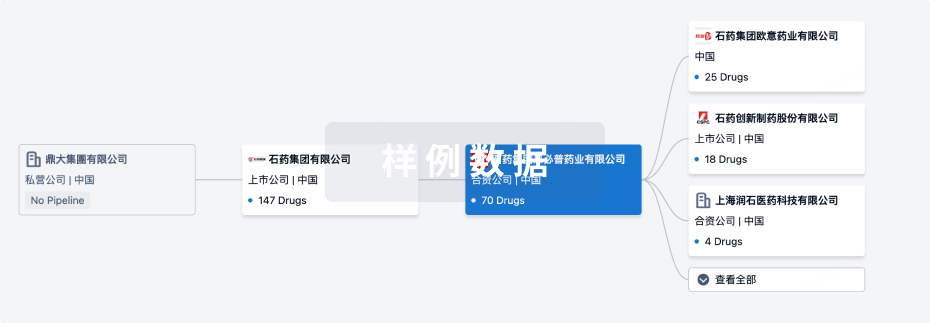
管线布局
2025年12月17日管线快照
管线布局中药物为当前组织机构及其子机构作为药物机构进行统计,早期临床1期并入临床1期,临床1/2期并入临床2期,临床2/3期并入临床3期
药物发现
3
14
临床前
临床2期
1
15
其他
登录后查看更多信息
当前项目
登录后查看更多信息
药物交易
使用我们的药物交易数据加速您的研究。
登录
或
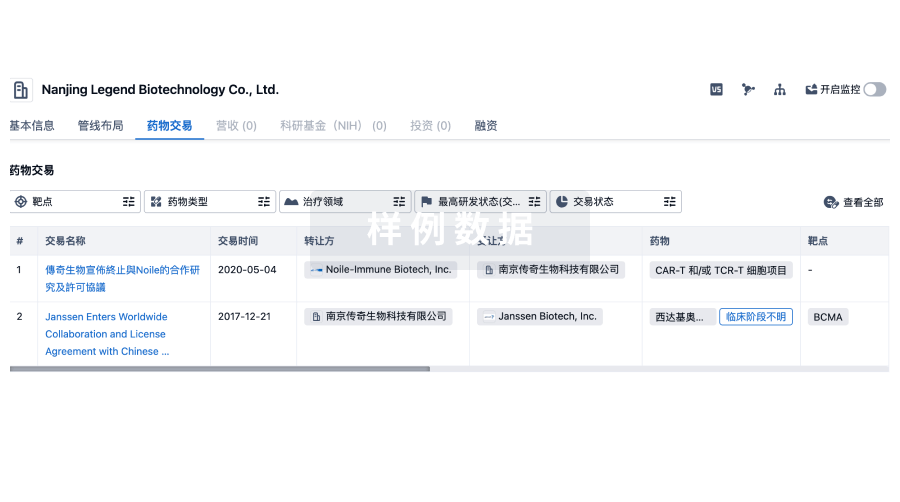
转化医学
使用我们的转化医学数据加速您的研究。
登录
或
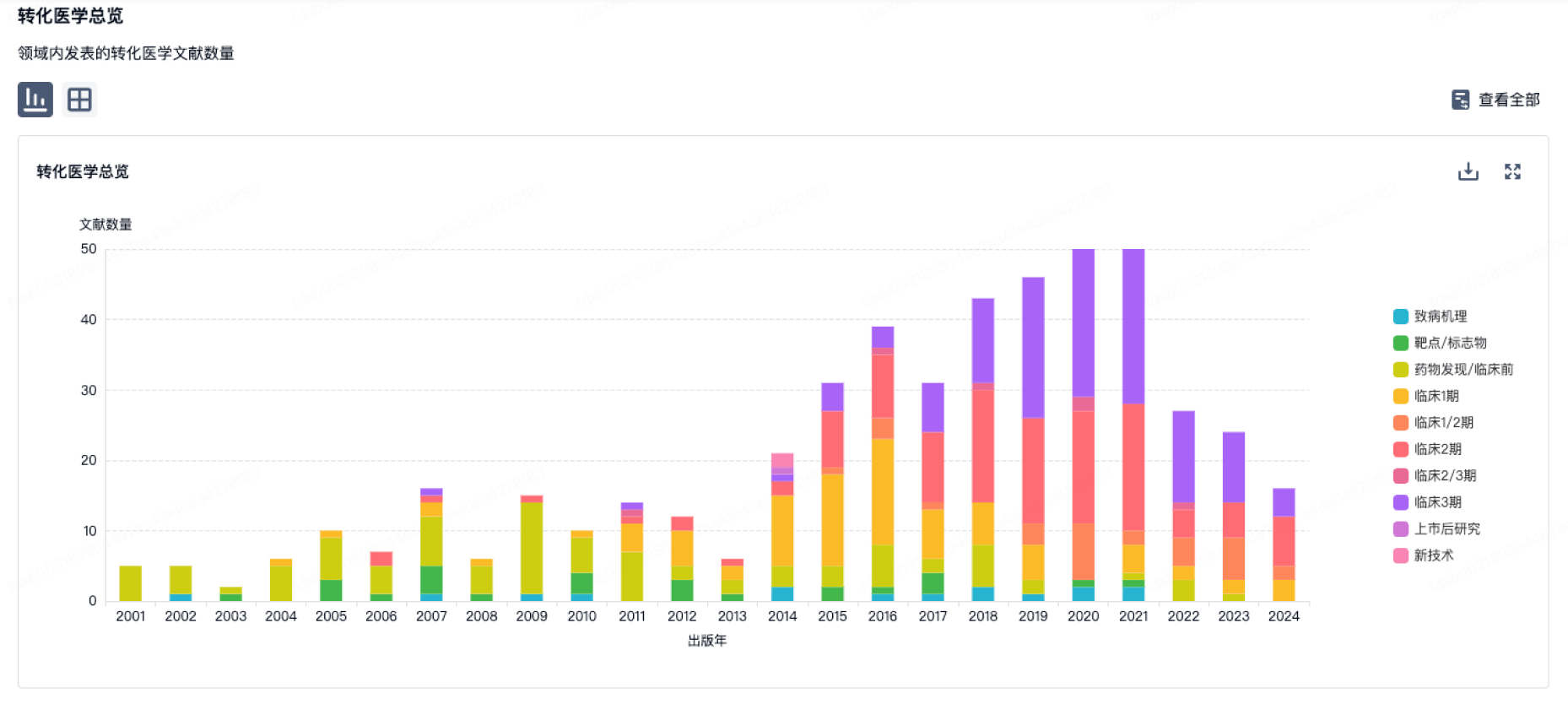
营收
使用 Synapse 探索超过 36 万个组织的财务状况。
登录
或
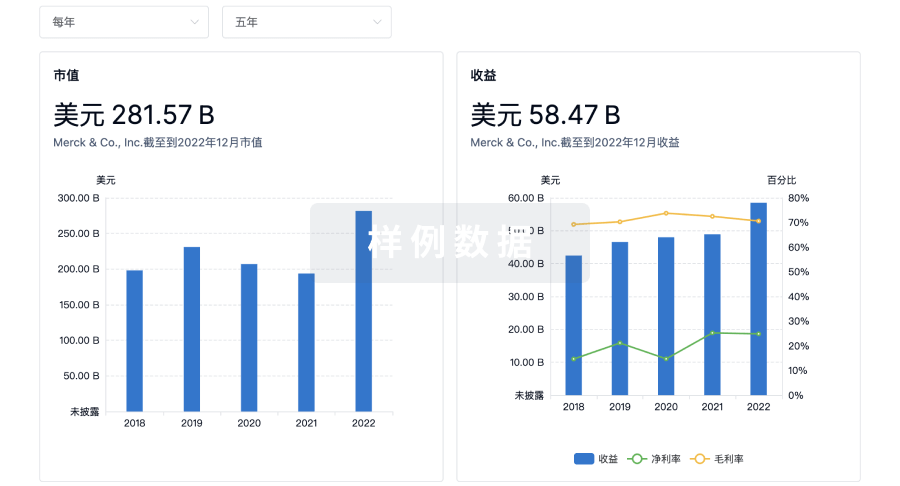
科研基金(NIH)
访问超过 200 万项资助和基金信息,以提升您的研究之旅。
登录
或
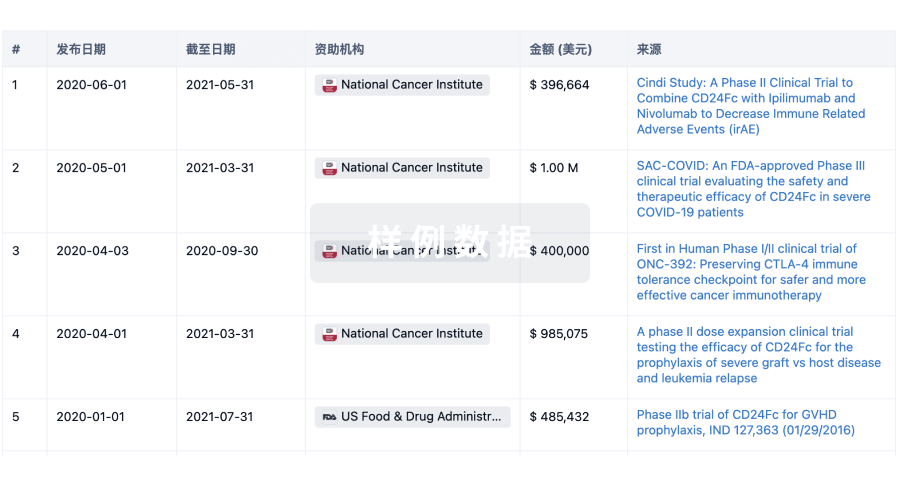
投资
深入了解从初创企业到成熟企业的最新公司投资动态。
登录
或
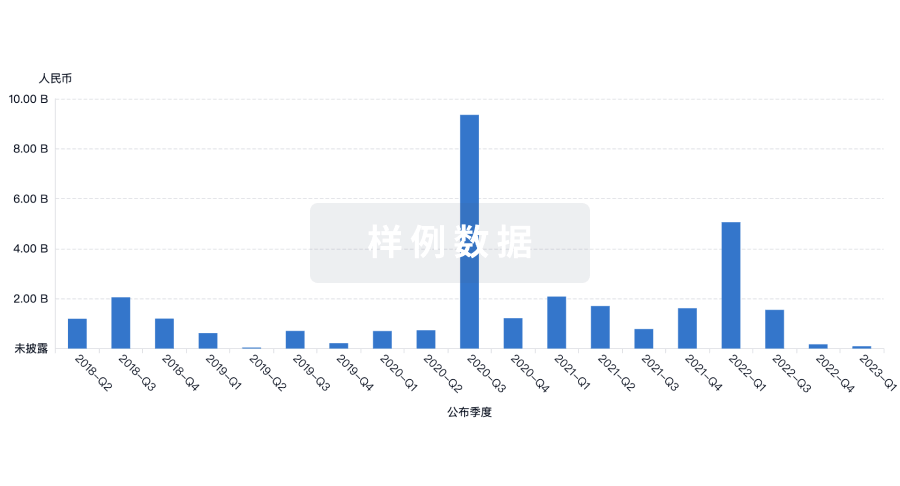
融资
发掘融资趋势以验证和推进您的投资机会。
登录
或
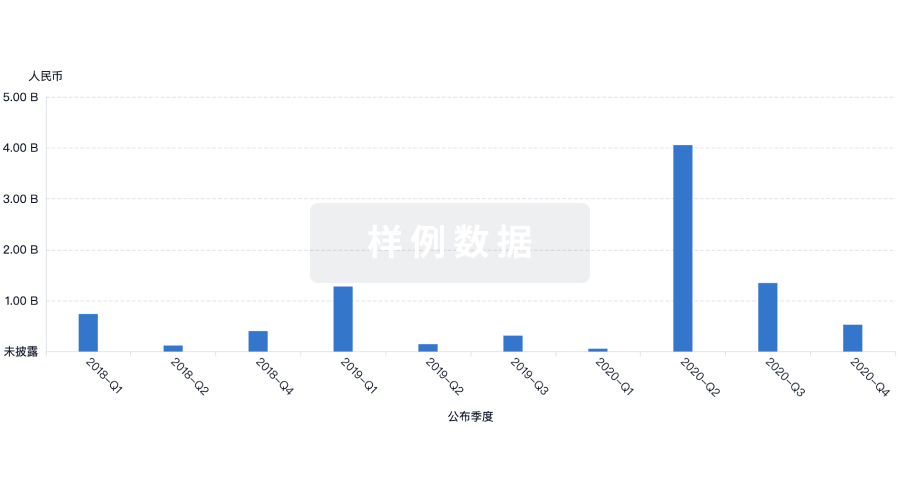
生物医药百科问答
全新生物医药AI Agent 覆盖科研全链路,让突破性发现快人一步
立即开始免费试用!
智慧芽新药情报库是智慧芽专为生命科学人士构建的基于AI的创新药情报平台,助您全方位提升您的研发与决策效率。
立即开始数据试用!
智慧芽新药库数据也通过智慧芽数据服务平台,以API或者数据包形式对外开放,助您更加充分利用智慧芽新药情报信息。
生物序列数据库
生物药研发创新
免费使用
化学结构数据库
小分子化药研发创新
免费使用
